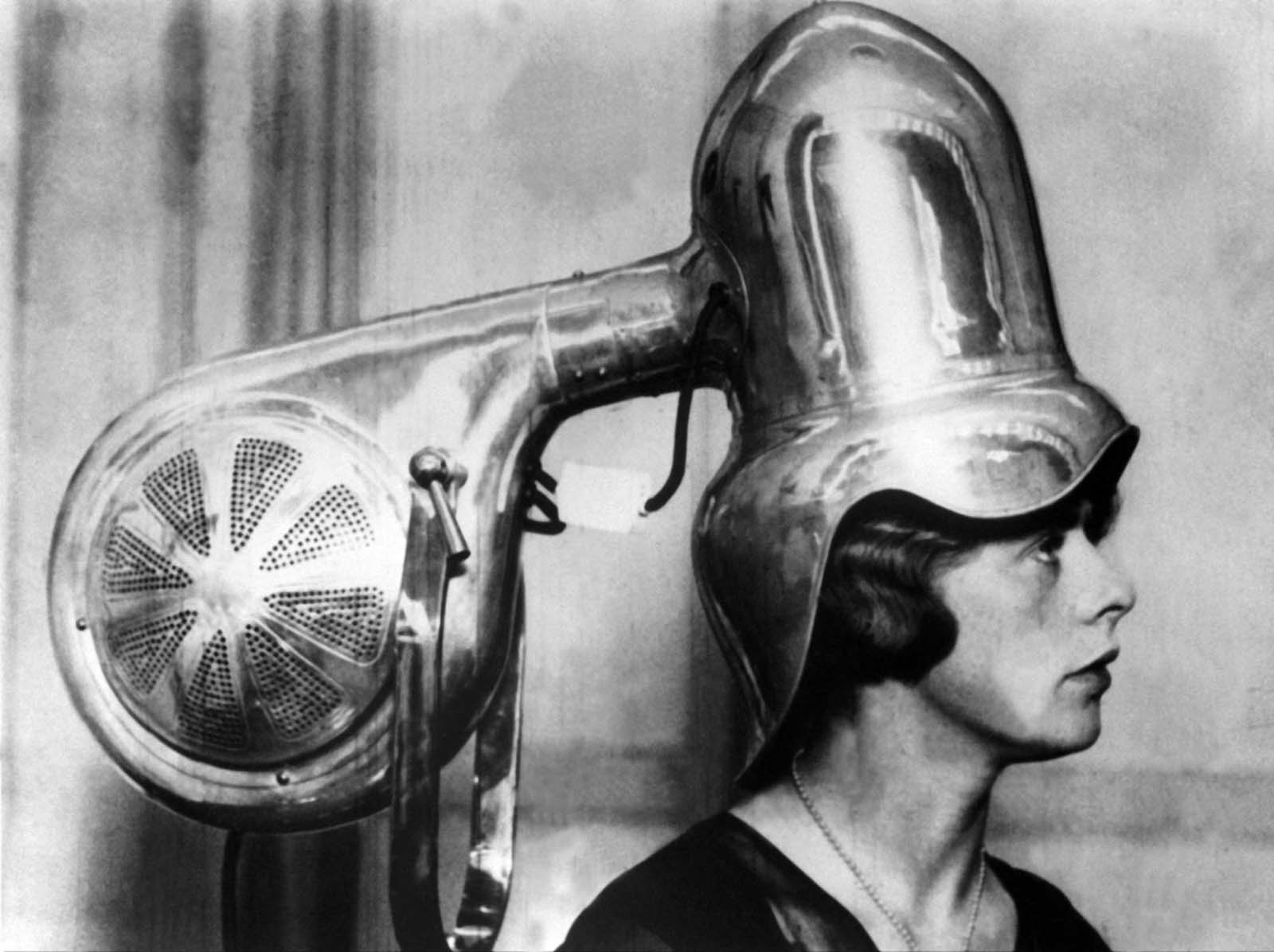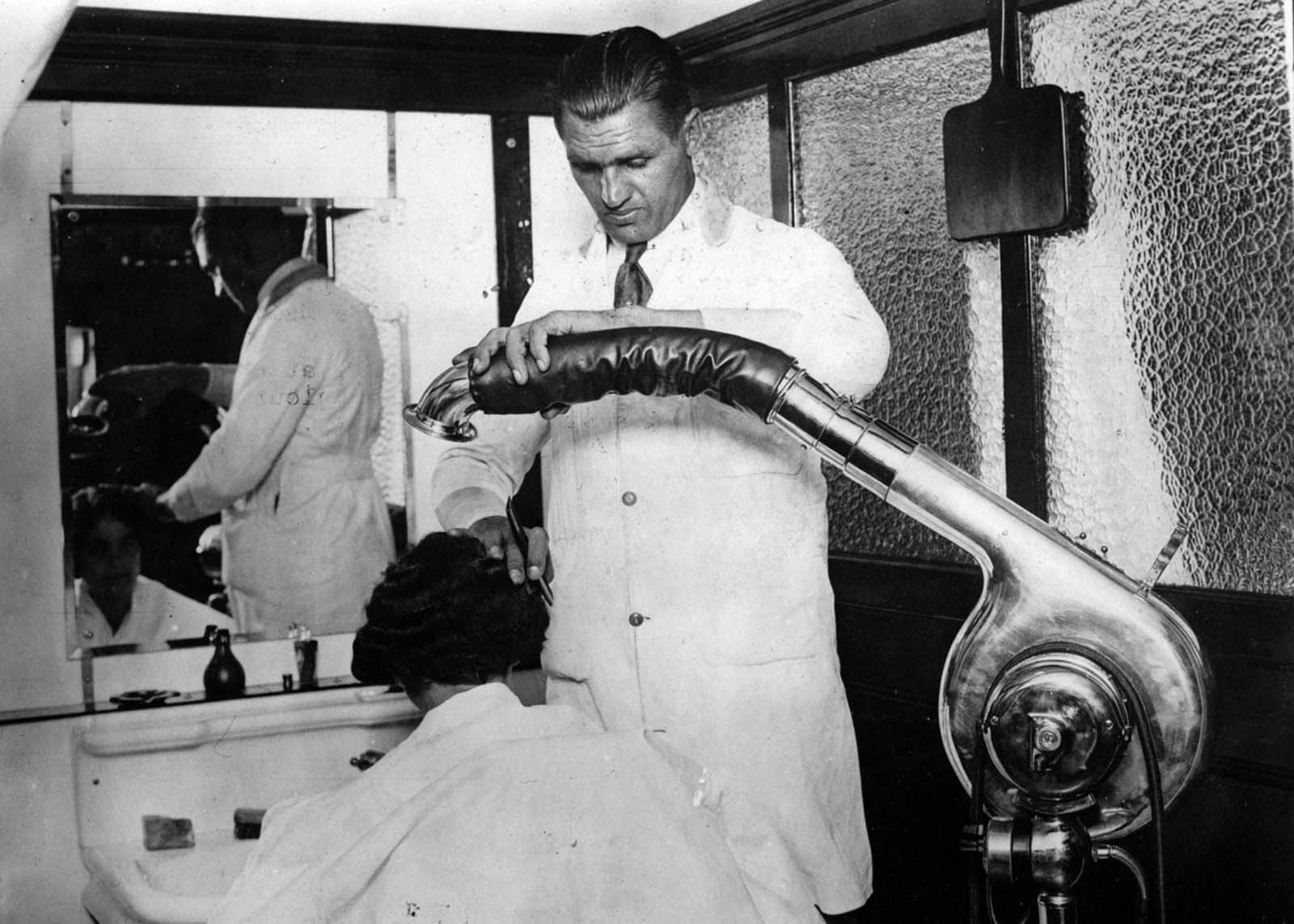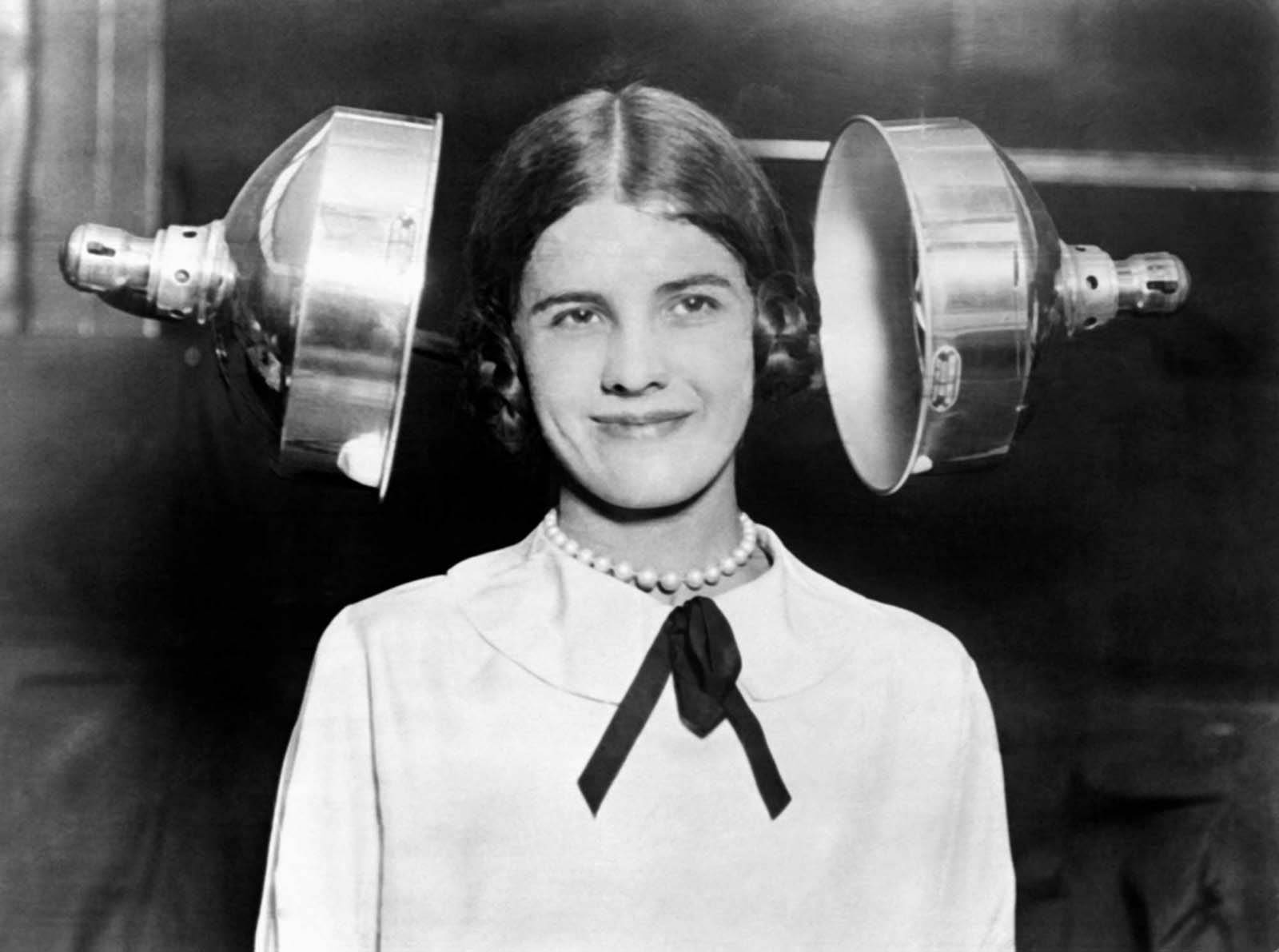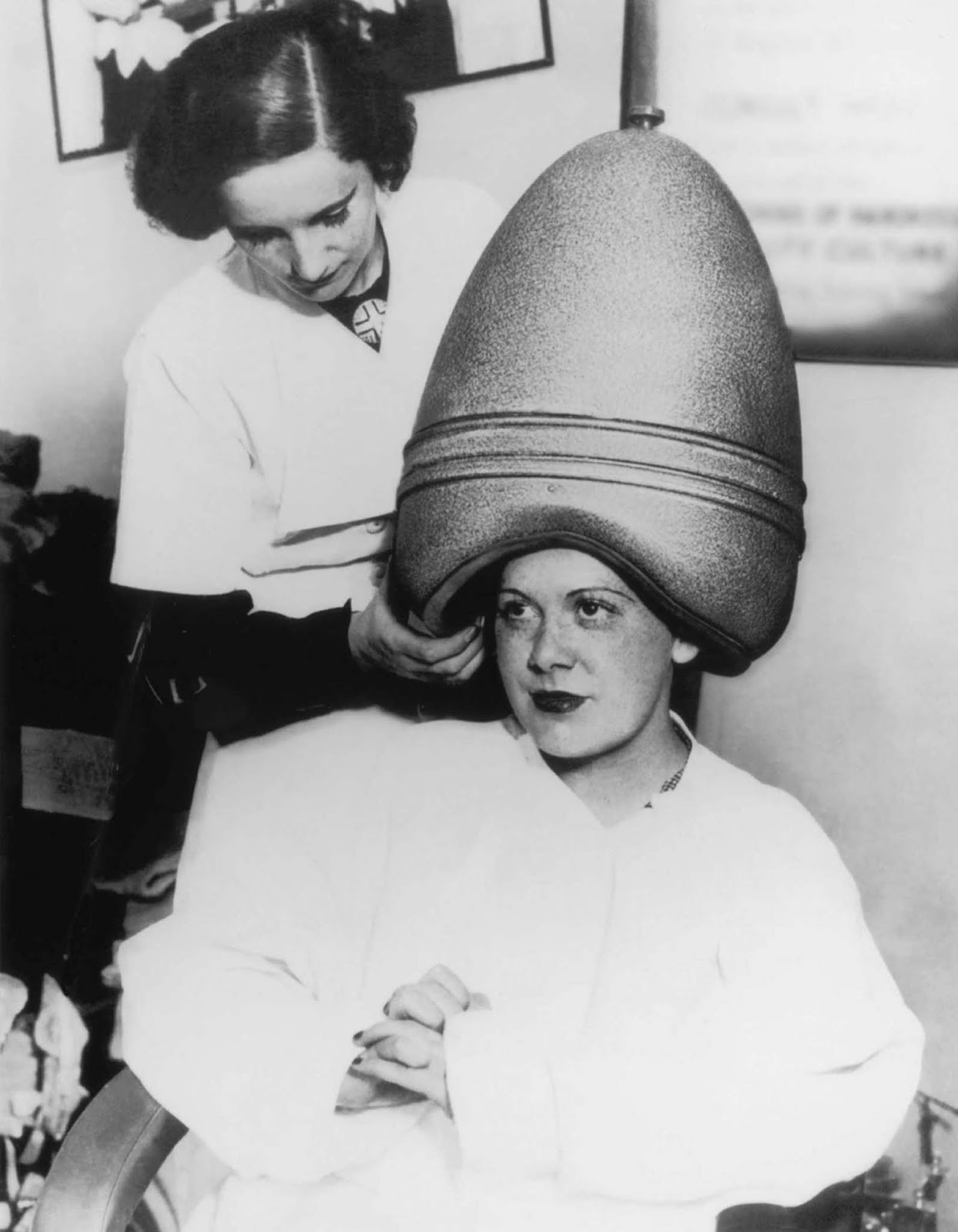Godefoy invented it for use in his hair salon in France, and it was not portable or handheld. It could only be used by having the person sit underneath it. Around 1915, hairdryers began to go on the market in handheld form. This was due to innovations by National Stamping and Electricworks under the white cross-brand, and later U.S. Racine Universal Motor Company and the Hamilton Beach Co., which allowed the dryer to be small enough to be held by hand. However, the early hand-held dryers were very weighty and created a tepid air flow. They also had a fatal flaw—literally—in their tendency to electrocute the user. The alternative—other than to use a towel—was to visit a hair salon and utilize what can only be described as a hair-drying device…or a helmet. Their inception coincided with the peak of post World War I Futurism and Art Deco design—and many such devices could easily have been props in Fritz Lang’s Metropolis, as these pictures demonstrate. The bonnet dryer was introduced to consumers in 1951. This type worked by having the dryer, usually in a small portable box, connected to a tube that went into a bonnet with holes in it that could be placed on top of a person’s head. This worked by giving an even amount of heat to the whole head at once. The 1950s also saw the introduction of the rigid-hood hairdryer which is the type most frequently seen in salons. It had a hard plastic helmet that wraps around the person’s head. This dryer works similarly to the bonnet dryer of the 1950s but at a much higher wattage. (Photo credit: Gamma-Keystone / Getty Images). Notify me of new posts by email.
Δ Subscribe







